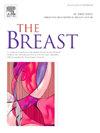Cost-effectiveness of sacituzumab tirumotecan versus chemotherapy for patients with metastatic triple-negative breast cancer in China
IF 7.9
2区 医学
Q1 OBSTETRICS & GYNECOLOGY
引用次数: 0
Abstract
Purpose
Sacituzumab tirumotecan (sac-TMT), a trop-2-targeted antibody-drug conjugate, has demonstrated significant clinical benefit in the OptiTROP-Breast01 trial for patients with advanced or metastatic triple-negative breast cancer (TNBC). This study evaluated the cost-effectiveness of sac-TMT compared with chemotherapy from the perspective of the Chinese healthcare system.
Methods
A partitioned survival model incorporating multiple survival extrapolation approaches was developed to estimate long-term clinical and economic outcomes. Survival data were reconstructed from the OptiTROP-Breast01 trial, while cost and utility inputs were derived from publicly databases and literature. Outcomes included life-years, quality-adjusted life-years (QALYs), total costs, and key economic endpoints: incremental cost-effectiveness ratio (ICER), incremental net health benefit (INHB), incremental net monetary benefit (INMB), and expected value of perfect information (EVPI). Sensitivity, scenario, and subgroup analyses were conducted to assess uncertainty.
Results
In the base-case analysis, sac-TMT yielded an additional 0.32 QALYs and 0.35 life-years compared with chemotherapy, with an incremental cost of $31815.17, resulting in an ICER of $98796.02 per QALY, exceeding the $40763.34 threshold in China. One-way sensitivity analysis identified the dose intensity, utility for PFS, patient weight, and price of sac-TMT as key drivers of ICER. Scenario analysis showed that reducing the drug price to 20 % of the current level would lower the ICER to $13319.46/QALY, with a 99.82 % probability of cost-effectiveness. EVPI was estimated at $33.69 per person.
Conclusion
While sac-TMT offers survival benefits in metastatic TNBC, it is unlikely to be cost-effective at current pricing. Substantial price reductions and optimized use may improve its economic value and support reimbursement.
中国转移性三阴性乳腺癌患者的舒妥珠单抗替鲁莫替康与化疗的成本-效果
acituzumab替鲁莫替康(sact - tmt)是一种trop-2靶向抗体-药物偶联物,在optitrop - breast - 01试验中显示出用于晚期或转移性三阴性乳腺癌(TNBC)患者的显着临床益处。本研究从中国医疗保健系统的角度,对sacc - tmt与化疗的成本-效果进行了评价。方法采用多种生存外推方法建立分区生存模型,评估长期临床和经济结果。生存数据重建自OptiTROP-Breast01试验,而成本和效用输入则来自公开数据库和文献。结果包括生命年、质量调整生命年(QALYs)、总成本和关键经济终点:增量成本-效果比(ICER)、增量净健康效益(INHB)、增量净货币效益(INMB)和完美信息期望值(EVPI)。进行敏感性、情景分析和亚组分析来评估不确定性。结果在基本病例分析中,与化疗相比,sac-TMT产生了0.32个QALY和0.35个生命年,增量成本为31815.17美元,导致ICER为每QALY 98796.02美元,超过了中国40763.34美元的阈值。单向敏感性分析发现,剂量强度、PFS效用、患者体重和sac-TMT的价格是ICER的关键驱动因素。情景分析显示,将药品价格降低到当前水平的20%,ICER将降至13319.46美元/QALY,成本-效果概率为99.82%。EVPI估计为每人33.69美元。结论:尽管sac-TMT在转移性TNBC中提供了生存优势,但以目前的价格来看,它不太可能具有成本效益。大幅降价和优化使用可以提高其经济价值并支持报销。
本文章由计算机程序翻译,如有差异,请以英文原文为准。
求助全文
约1分钟内获得全文
求助全文
来源期刊

Breast
医学-妇产科学
CiteScore
8.70
自引率
2.60%
发文量
165
审稿时长
59 days
期刊介绍:
The Breast is an international, multidisciplinary journal for researchers and clinicians, which focuses on translational and clinical research for the advancement of breast cancer prevention, diagnosis and treatment of all stages.
 求助内容:
求助内容: 应助结果提醒方式:
应助结果提醒方式:


